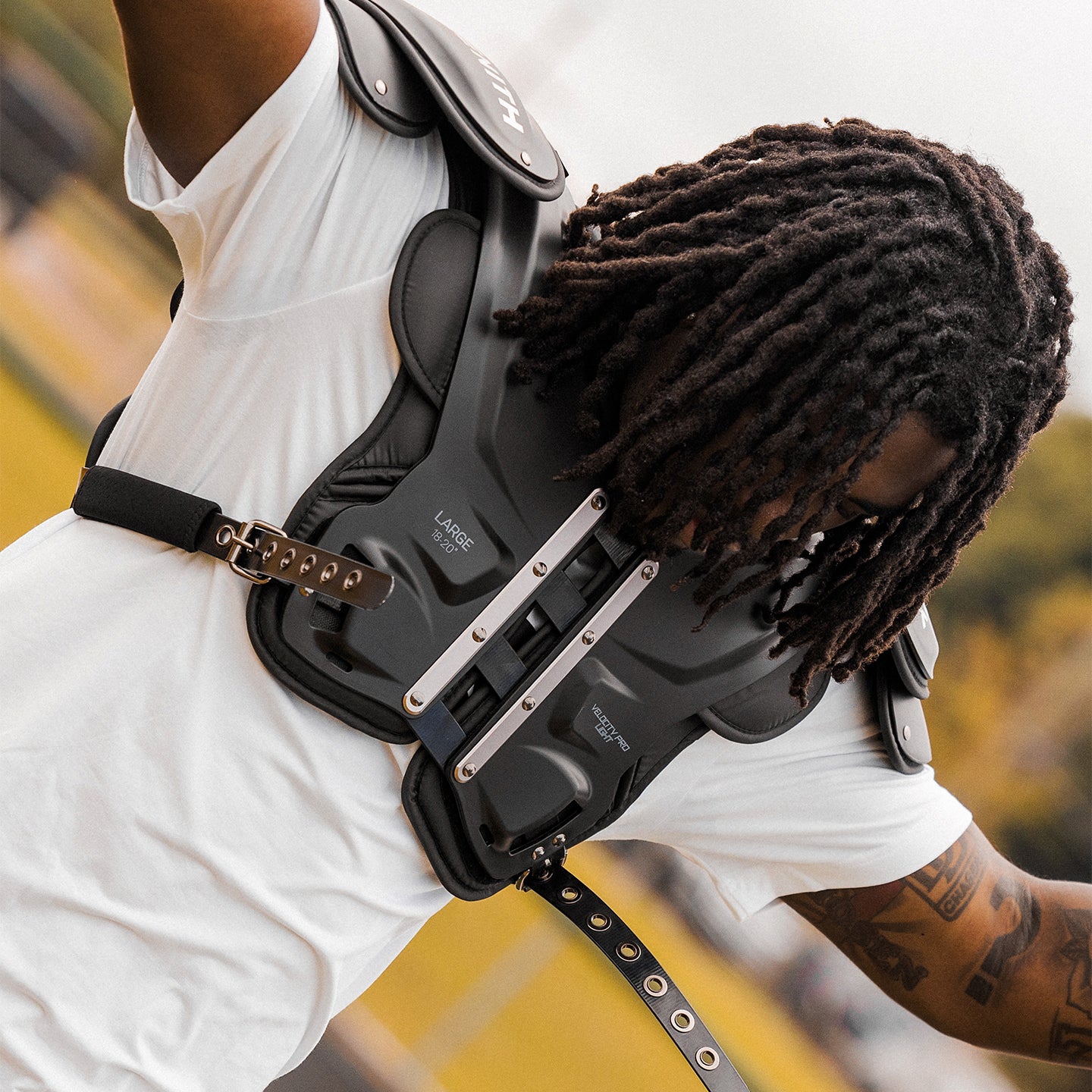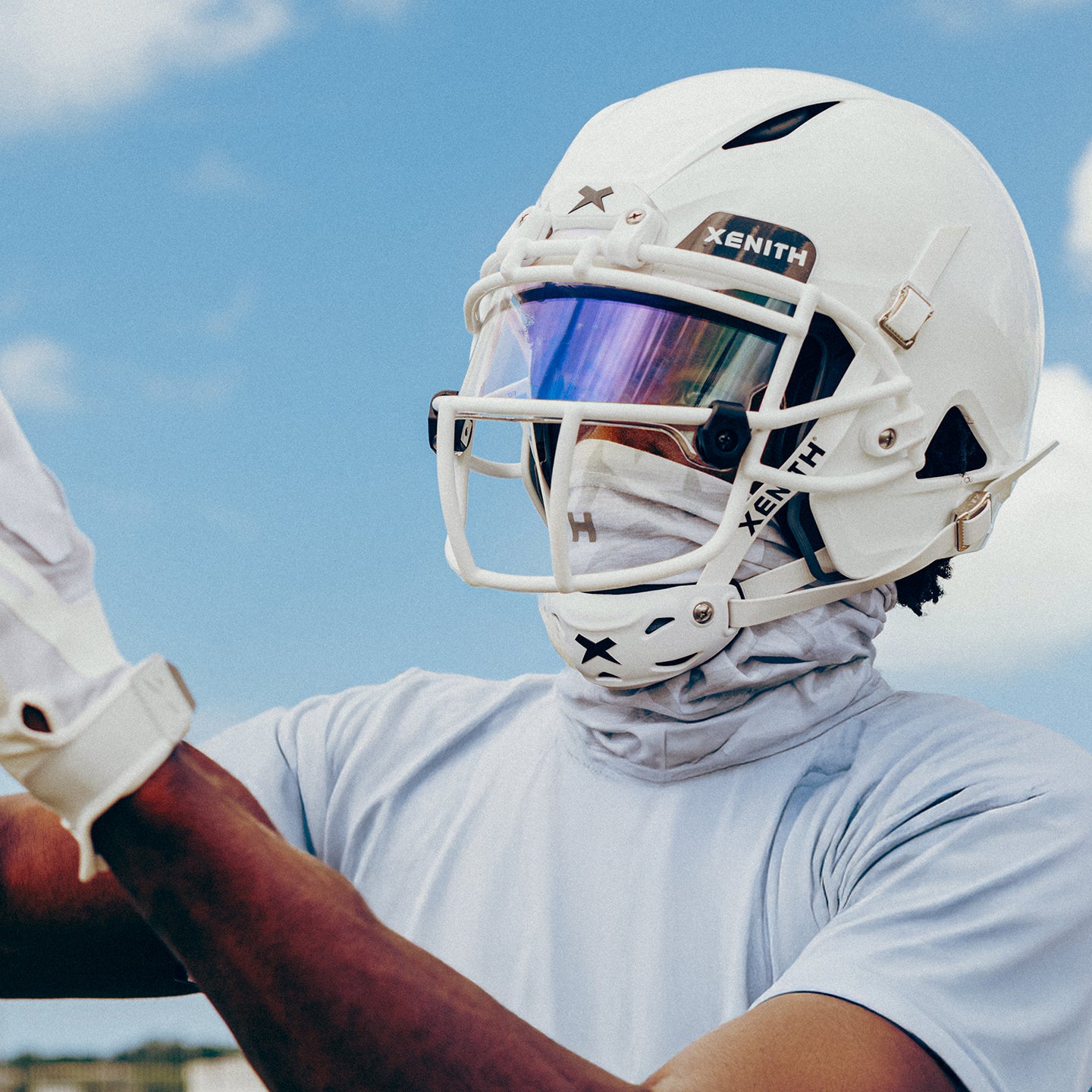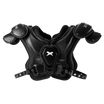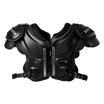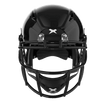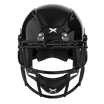Non-Tackle Safety Briefing
For many families, concern about injuries in tackle football is a common reason they choose to play non-tackle football.
However, it’s important to know that non-tackle football does not mean non-injury football. While researchers are actively studying injuries that occur in non-tackle football, injuries that can occur in tackle football (e.g., sprains, fractures, concussions) have been found to occur in non-tackle football.
A study of youth football leagues found that players in one flag football league had similar concussion rates to players in two tackle football leagues. Other research (Burnham, 2010; Kaplan, 2013; Hauret, 2015) suggests that head injuries are less common in non-tackle.
While more study is needed, it’s important to understand there is still risk of concussion and other serious injury in non-tackle football. Deciding to play or wear protective equipment is an important family decision.
This Safety Briefing is meant to help players and parents:
1. Learn about Xenith LOOP
2. Consider the protective limitations
3. Play the game right
We hope every player and parent feels comfortable with their decision to play using Xenith protective equipment. Taking time to review and discuss this Safety Briefing as a family is a great way to start!
LEARN ABOUT XENITH LOOP

XENITH LOOP REDUCES IMPACT FORCES
Xenith LOOP is 5-star rated by Virginia Tech and is considered the best available headgear in reducing linear and rotational forces. LOOP uses a high performance foam to help reduce impact forces that can occur during non-tackle football.
XENITH LOOP PUTS PADDING WHERE IT’S NEEDED
Xenith researchers studied how elite 7-on-7 players sustain head impacts during competition. Most head contacts occurred on the sides and back of the head.
Xenith LOOP strategically places padding around the head where players commonly experience head contact.

This design meets the needs of athletes who want padded headgear that is lightweight and comfortable, keeps them cool, and accommodates a variety of head sizes and hair styles. Clearance around the ears may also accommodate players with medical devices, such as cochlear implants.

CONSIDER THE PROTECTIVE LIMITATIONS
PADDED HEADGEAR CANNOT ELIMINATE CONCUSSIONS
According to the Mayo Clinic, the brain has a consistency like gelatin and is cushioned from everyday bumps by fluid between the brain and skull. No headgear, including top-rated padded headgear, can prevent concussions because they cannot keep the brain from moving within the skull during severe head acceleration or deceleration.
Padded headgear can help reduce forces transmitted to the head, but some hits involve forces that are too great for headgear to meaningfully reduce. Padded headgear provides no protection against other hits that cause the head to move rapidly, such as impacts to the body, face, or part of the head not covered by padding.
Even for tackle football helmets, the U.S. Centers for Disease Control (CDC) advises that “there is no concussion-proof helmet" and that “even with a helmet, it is important for your child or teen to avoid hits to the head.” Similarly, no padded headgear can eliminate the risk of concussion.
What is a Concussion?
PADDED HEADGEAR CANNOT PREVENT CTE OR OTHER NEURODEGENERATIVE DISEASES
Some organizations (e.g., Aspen Institute, Concussion Legacy Foundation) recommend non-tackle football as a way to participate in football while reducing the likelihood of developing certain long term health conditions believed to be caused by repeated head trauma, such as Chronic Traumatic Encephalopathy (CTE) and other neurodegenerative diseases.
It’s important to understand that there is no headgear known to prevent CTE. Repeated head impacts sustained during any activity, including non-tackle football, may contribute to one’s overall risk of developing CTE.
What is Chronic Traumatic Encephalopathy (CTE)?
PADDED HEADGEAR DOES NOT PREVENT OTHER SERIOUS INJURIES
Padded headgear cannot prevent injuries to parts of the head it doesn’t cover, including to the eyes, nose, mouth, ears, and neck. Because it does not have a hard shell, it does not reduce the risk of skull fractures as much as hard football helmets.
If you are concerned about protecting other parts of your head, consider using different headgear or additional protective equipment (e.g., mouthguard, eye protection, nose guard), as permitted by your league.
RESEARCH ABOUT HOW MUCH PADDED HEADGEAR REDUCES YOUR RISK OF INJURY IS ONGOING
Real-world gameplay settings are dynamic and complex situations. While research in controlled laboratory settings (e.g., Virginia Tech star ratings) has measured how much padded headgear can reduce impact forces, scientists are still studying the real-world effectiveness of how much padded headgear can prevent injuries.
A widely established conclusion has not yet been reached about how the performance (e.g., percent of impact absorbed) of padding at the point of impact affects the likelihood of sustaining a concussion or its severity.
According to Virginia Tech, “any player in any sport can sustain a head injury with even the very best head protection.”
For example, in a 2019 study of high school soccer players, the use of padded headgear had no effect on the rate of concussion observed over the course of the season (no players were using the Xenith LOOP). A 2019 position statement by the National Federation of State High School Associations (NFHS) states, “There is currently limited medical evidence to support the use of soft headgear products to reduce the risk of concussion” and “Valid scientific research should continue to be pursued to determine the ability of soft headgear to decrease the incidence of concussion.”
There are differing opinions about the benefits of padded headgear in non-tackle football. Some are concerned that the protective benefits of padded headgear may be reduced or even outweighed by the additional risk of injury if players play more aggressively with the padded headgear. Others believe the impact reduction provides a net benefit. Therefore, depending on your league, padded headgear may be optional, mandatory, or prohibited. Xenith recommends players always avoid head contact, follow their league rules, and use their headgear properly.
Depending on the nature of impacts you experience, your risk of sustaining an injury, such as a concussion, may not be noticeably different while wearing padded headgear than without it.
STANDARDS ARE STILL BEING DEVELOPED
Because padded headgear for non-tackle football is a relatively new product category, industry standards for the design and performance of such headgear remain in development.The National Operating Committee on Standards for Athletic Equipment (NOCSAE) is the industry standard organization for publishing design and performance for athletic equipment. NOCSAE has not published any standard related to headgear designed for non-tackle football. Unlike tackle football helmets, no non-tackle headgear currently on the market has been certified to NOCSAE standards following evaluation and testing by the Safety Equipment Institute (SEI).
In the meantime, Xenith is performing research in collaboration with academic and industry partners to support the development of product design and performance standards.
Virginia Tech, who rates tackle football helmet performance, also tests padded headgear for impact reduction performance. Like all Xenith products, the Xenith LOOP received a 5-star rating.
PLAY THE GAME RIGHT
USE HEADGEAR PROPERLY
The Xenith LOOP is designed for non-tackle football applications, including:
- Competitive 7-on-7 football games or practices.
- Competitive flag football games or practices.
- Certain non-contact exercises during tackle football practices (under coach supervision)
Never intentionally make head contact with the Xenith LOOP. Never butt, ram, or spear another player. Improper use of the Xenith LOOP can result in severe head and neck injuries, including but not limited to concussions, paralysis, or death, to you and/or an opponent.
Padded headgear is not a substitute for a tackle football helmet. Never use padded headgear to play tackle football or other contact sports where certified helmets are required.
The Xenith LOOP is not a medical device. Do not use the Xenith LOOP when medically advised to avoid head impacts. The Xenith LOOP is not a substitute for proper concussion recovery as advised by medical personnel.
The NFHS Sports Medicine Advisory Committee “strongly advises against using soft headgear as a justification to permit medical clearance of an athlete who would otherwise not be medically cleared to participate in a contact sport.”
FOLLOW LEAGUE RULES AND COACH'S INSTRUCTIONS
Regardless of age and contact level, responsible leagues and coaches should teach and reinforce the proper techniques and up-to-date safety rules and policies.
Training and certification is a good way to reduce the chances of head impacts and other injuries on the field. Make sure your coach has the applicable certifications from USA Football.
Everyone involved in football (such as leagues, schools, coaches, etc.) can help reduce the risk of head injuries in many ways, including:
FOLLOWING MEDICAL PROTOCOLS
- Recognize concussion, remove players from play, and have players properly evaluated and treated by medical personnel.
- Provide qualified athletic trainers or physicians at practices and games.
- Perform pre-season medical screenings.
- Provide preseason concussion education to parents and players.
MANAGING PLAYER SAFETY
- Enforce rules to protect players during games.
- Minimize contact during games and practices.
- Teach proper techniques (e.g., allowable blocking, flag removal) to minimize head injury risks.
Parents can help reinforce the coach’s instructions about proper technique and good safety practices by discussing it with their child(ren) before and after practices and games.
To learn more, including questions parents can ask their child’s coach to address safety concerns, check out the following:
Xenith recommends playing only for coaches and in leagues that have satisfied the safety concerns of players and their parents.
RECOGNIZE AND RESPOND TO CONCUSSION SYMPTOMS
During a football game or practice, players may receive hits that cause concussion symptoms. It’s important to know what to look for so that the player can be treated properly.
Contrary to popular opinion, most athletes with a concussion do not lose consciousness. Additionally, symptoms may be more difficult to detect in younger athletes.
Learn to recognize concussions, and do not play if concussion is suspected. Another impact before a concussion heals can cause more damage or, in rare cases, even result in death, known as Second Impact Syndrome.
The player must be examined by qualified medical personnel (athletic trainer, doctor, etc.) who will decide if it’s okay to keep playing or not. Only medical personnel should make this decision, not the player, coach, or parent.
CONCUSSION SIGNS
While playing or watching football, be on the lookout for concussion signs in yourself and others, such as:
- Being dazed or stunned
- Being confused about assignment or position
- Forgetting plays
- Unsure of game, score or opponent
- Losing consciousness (even briefly)
- Showing behavior or personality changes
- Forgetting events prior to or after the hit or fall
CONCUSSION SYMPTOMS
Symptoms of concussion can show up several minutes to hours after a hit. An athlete should be evaluated by a medical professional before doing any activity if they show any of the following symptoms:- Headache or pressure in the head
- Nausea or vomiting
- Balance problems or dizziness
- Double or blurry vision
- Sensitivity to light or noise
- Concentration or memory problems
- Feeling sluggish, hazy, foggy or groggy
- Trouble sleeping
CONCUSSION RECOVERY
After a concussion is diagnosed by medical personnel, immediate physical and mental rest is an important first step of the recovery process. In most cases, athletes can then gradually resume physical and mental activity until they are fully cleared to play again based on the recommendations of a physician.
This process is an individualized, step-wise process, known as the “return-to-play” and “return-to-learn” protocol. The specifics of this process can vary depending on the league, school, state, etc., and the nature of the injury. If you or your child is diagnosed with a concussion, consult a medical professional for specific guidelines for when and if it is safe to return to schoolwork and athletics.
Recovery time for concussions can vary. The CDC says that “most children with a concussion feel better within a couple of weeks.” However, in some cases, recovery can take months or longer.
When treated properly, nearly all concussions resolve without permanent effects. However, according to the CDC, severe brain injuries can produce long-term effects, such as problems with thinking, memory, learning, coordination and balance, speech, hearing, vision, and emotions.
Reporting concussions as soon as they are suspected can help reduce recovery time. Hiding symptoms from others (e.g., athletic training staff, coaches, doctors, parents, teammates), continuing to play, or delaying reporting a suspected concussion in any way can significantly lengthen the time it takes for the player to recover and increase the risk of further injury.
Learn more:
CDC - Facts About Concussion and Brain Injury
CDC - Heads Up Online Training Courses
Concussion Legacy Foundation – Concussion Resources
USA Football – Concussion Recognition and Response
READY TO PLAY?
At Xenith, we hope each player and parent considers what is best for them and makes sports decisions they are comfortable with.
Thank you for taking time to think about safety. While this briefing is only a sampling of information that is available for players and their parents to consider, it is a great head start!
If you have further concerns about safety, we encourage you to keep researching on your own and talk to your health care provider as well as the parents, coaches, and league administrators in your community.

